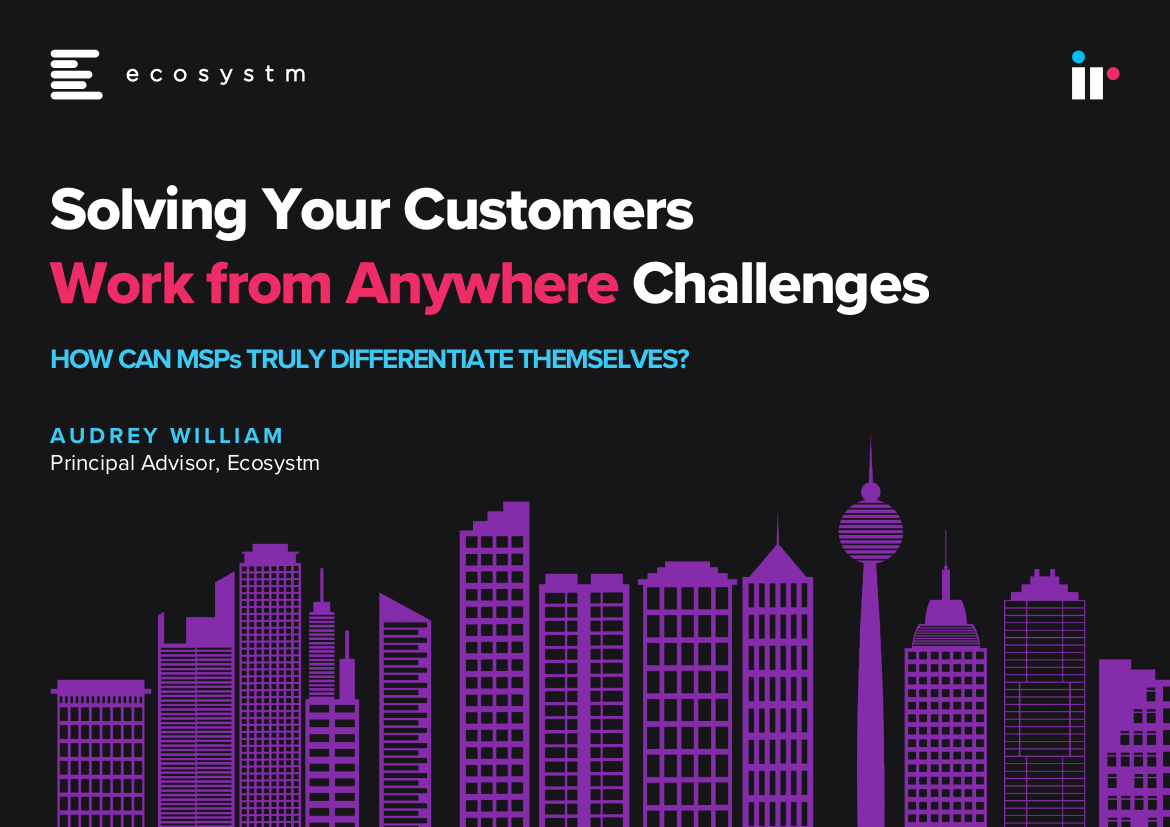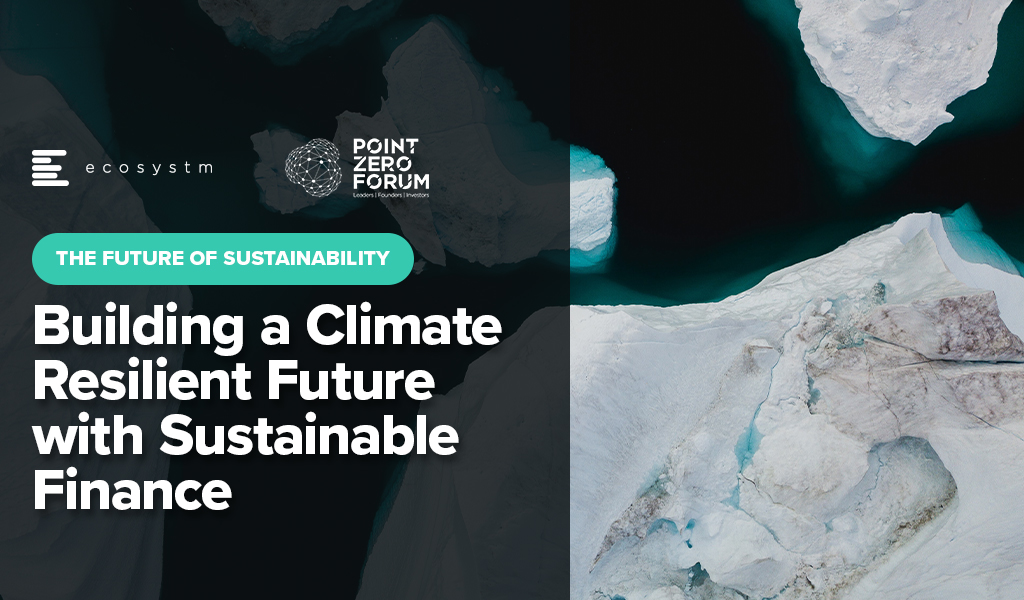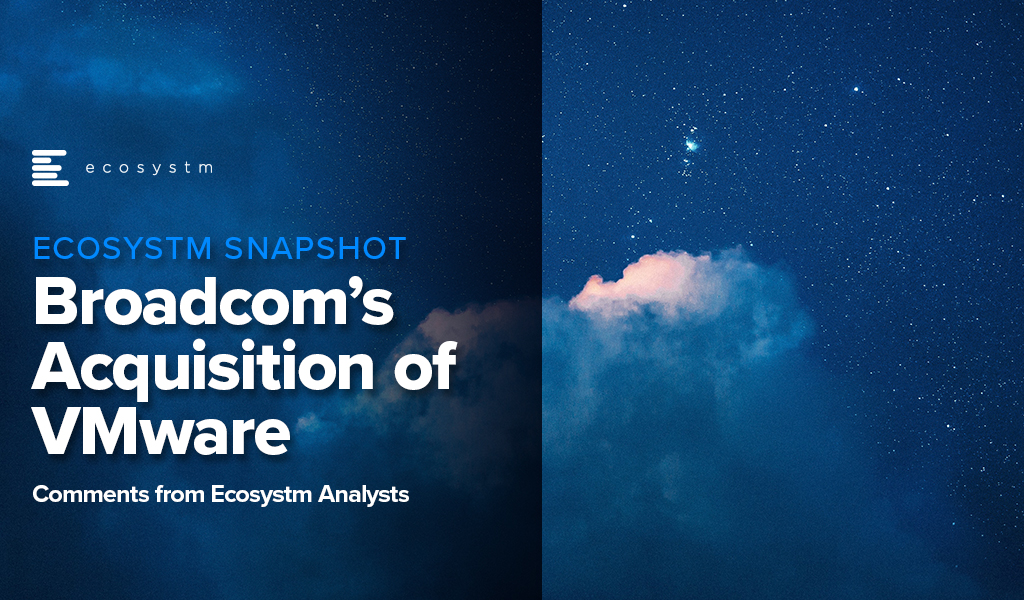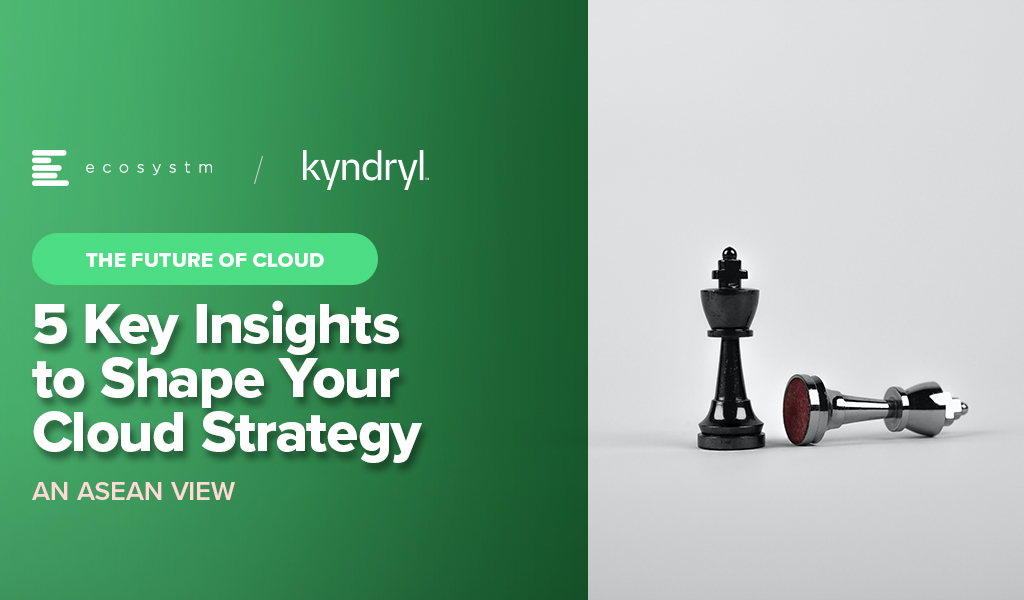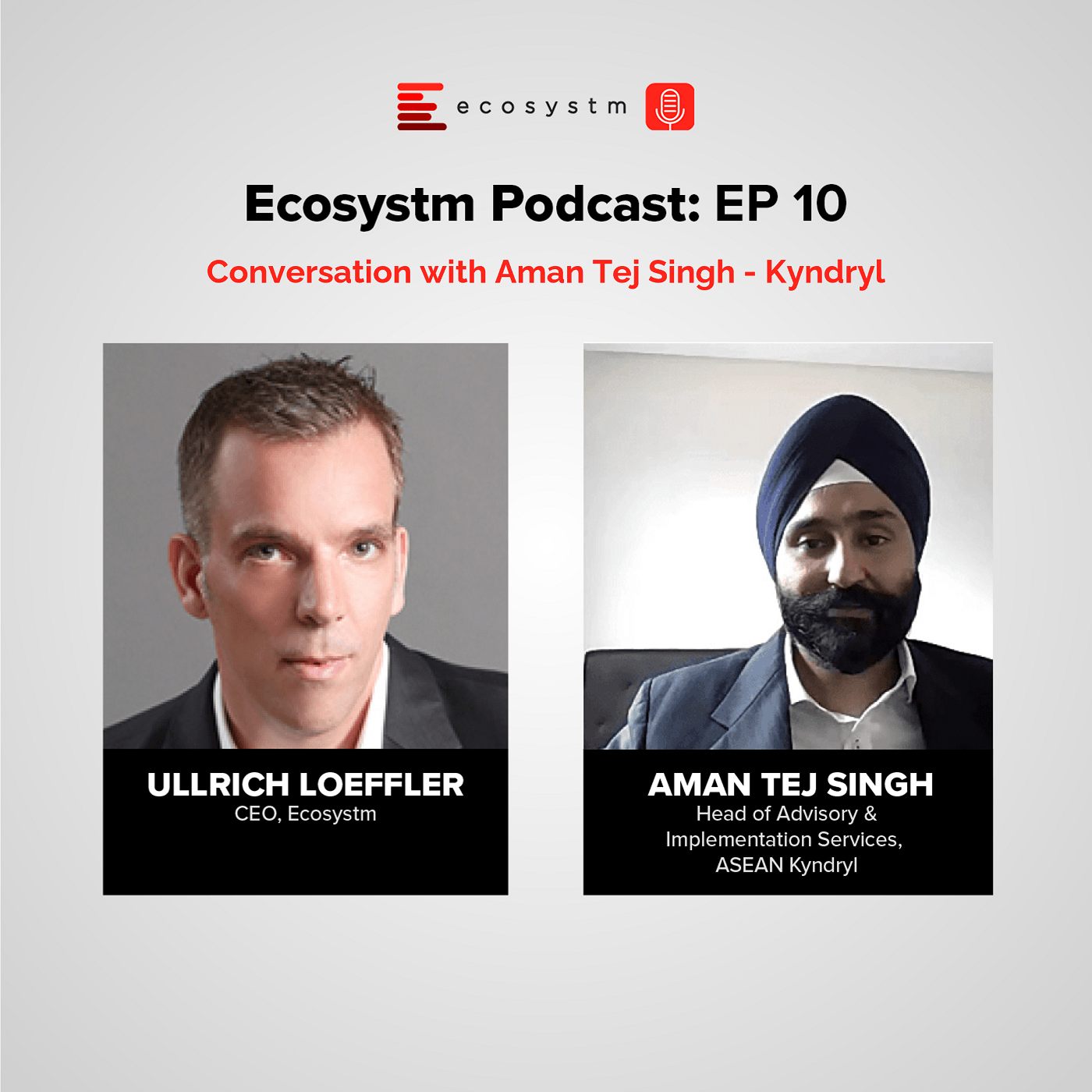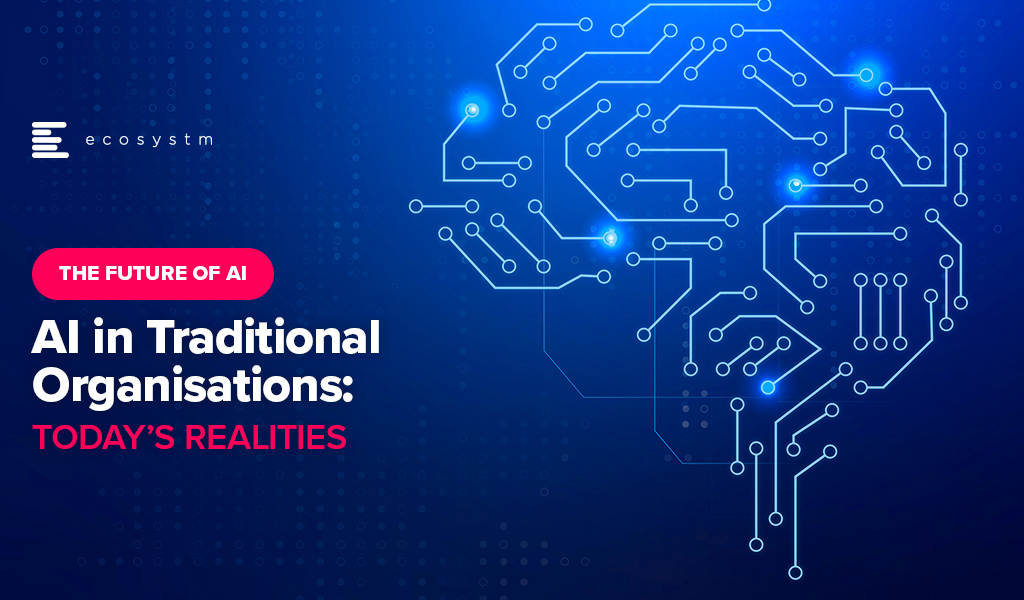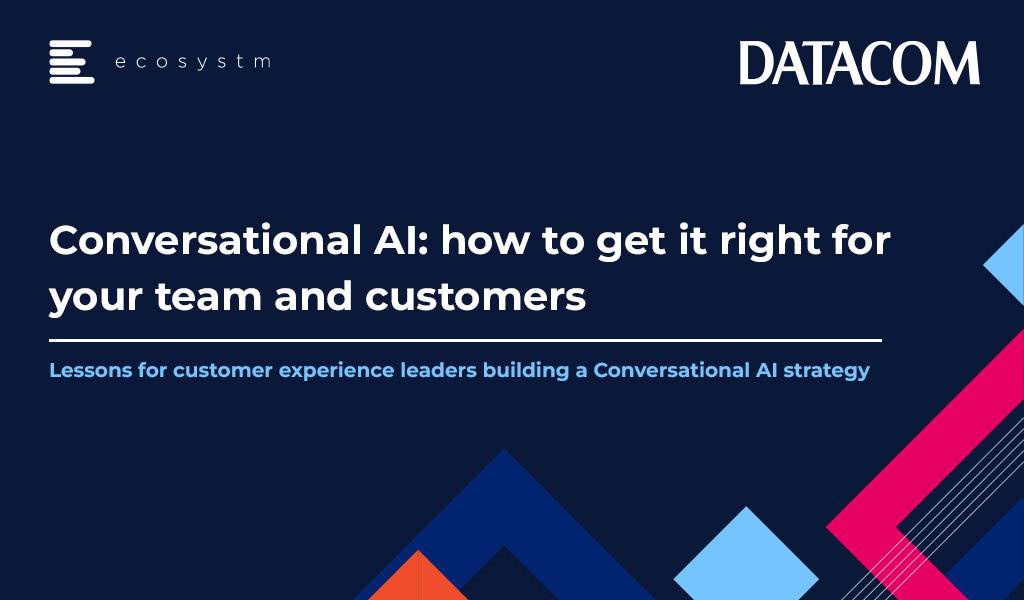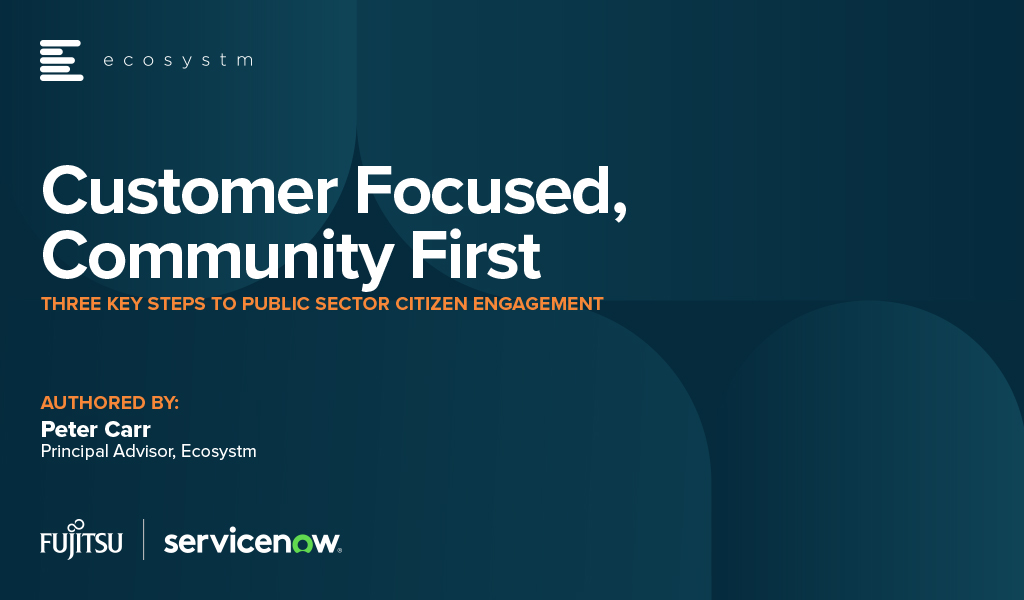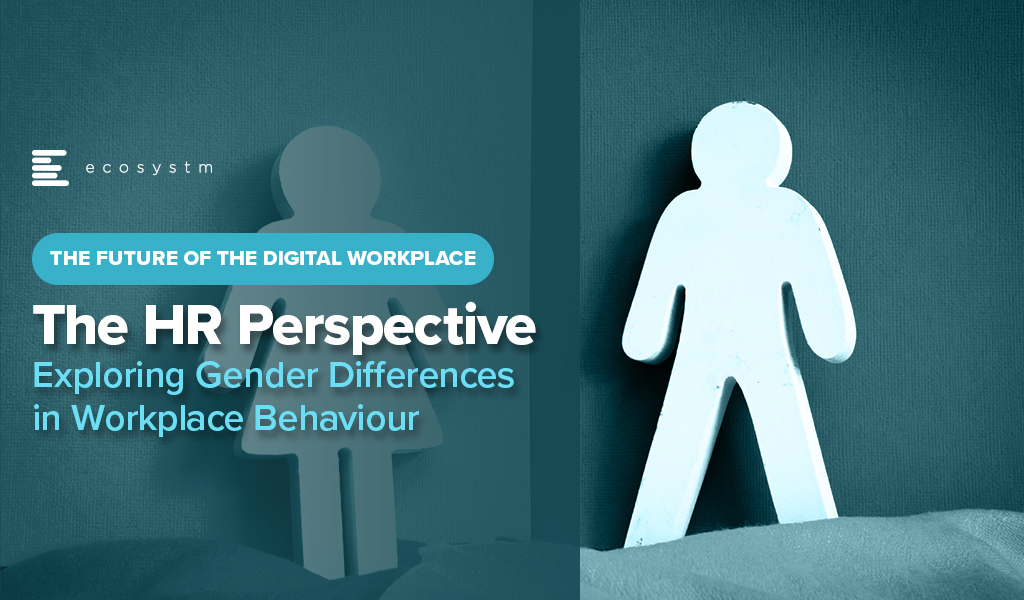CIOs and tech teams have seen a sharp shift in their mandates and find themselves delivering on business and customer outcomes, rather than just technology. They are partners in their organization’s transformation vision; and find themselves:
- Defining the organization’s cloud strategy
- Modernizing applications and infrastructure
- Revamping the data architecture
- Proactively securing the IT environment
- Managing and evolving business continuity plans
Download Whitepaper – Solving Your Customers Work from Anywhere Challenges

(Clicking on this link will take you to the IR website where you can download the whitepaper)

The 2021 United Nations Climate Change Conference (COP26, that was held in Glasgow in 2021, highlighted the need to mobilise public and private sector finance to support global net-zero emissions targets and to protect communities and habitats.
Sustainable Finance and Green Bonds present opportunities for lenders, investors, and borrowers. It allows borrowers to obtain funding at decreased and competitive costs. And as investor demands continue to rise, Government institutions have expressed keen interest in issuing green bonds to support ecologically beneficial initiatives.
Here are some recent global announcements.
- France announces the issuance of USD 4 billion green bond sale.
- Germany raises USD 4 billion in green bonds to finance green expenditures and investments.
- Singapore sets a roadmap for its first sovereign green bond with the Singapore Green Bond Framework.
- Austria launches its first green bond.
- The UK launches an inquiry into the role of the financial sector in the country’s net zero transition.
Download Building a Climate Resilient Future with Sustainable Finance as a PDF

Last month, Broadcom announced their intentions to acquire VMWare in a deal worth USD 61 billion – one of the biggest acquisitions in the tech world.
Broadcom has been actively looking to diversify away from their core business of chip manufacturing into enterprise software. Their previous acquisitions – CA Technologies for USD 18.9 billion in 2018, followed by Symantec for USD 10.7 billion the next year – have already indicated that. The VMware acquisition is the biggest – and arguably very different from the others.
Ecosystm Analysts, Alan Hesketh, Darian Bird, Niloy Mukherjee and Tim Sheedy comment on the implications for the companies and the market.
Download Ecosystm Snapshot: Broadcom’s Acquisition of VMware as a PDF

Digital transformation has been a key company objective over the last two years – and more than a third of enterprises in ASEAN have it as their key business priority in 2022-23. They are aiming to be agile and digital organisations – with access to real-time data insights at their core.
Businesses have learned that their technology systems need to be scalable, accessible, easy to manage, fast to deploy and cost effective. Cloud infrastructure, platforms and software has become key enablers of business agility and innovation.
But the expansion of cloud applications has also seen an infrastructure and applications sprawl – which makes it essential for organisation to re-evaluate their cloud strategy.
Here are 5 insights that will help you shape your Cloud Strategy.
- Technology Change Management. Your cloud strategy must define the infrastructure and data architecture, security and resiliency measures, the technology environment management model, and IT operations.
- Building Scalable Enterprises. Focus on seamless access to all organisational data, irrespective of where they are generated (enterprise systems, IoT devices or AI solutions) and where they are stored (public cloud, on-premises, Edge, or co-location facilities).
- A Hybrid Multicloud Environment. For a successful hybrid multi cloud environment, keep a firm eye on hybrid cloud management, a suitable FinOps framework that balances performance and cost, and integration.
- A Technology-Neutral Approach. Partnering with a technology-neutral cloud services provider that leverages the entire tech ecosystem, will be critical.
- “Hybrid Cloud” Can Mean Many Things. Work with a cloud services partner, that has broad and deep capabilities across multiple hyperscalers and is able to address the unique requirements of your organisation.
Read on for more insights
Download 5 Key Insights to Shape Your Cloud Strategy – An ASEAN View as a PDF

ASEAN is all set to become the 4th largest economy in the world by 2030. Ullrich Loeffler, CEO, Ecosystm caught up with Aman Tej Singh, Head of Advisory & Implementation Services, ASEAN Kyndryl to discuss the implications of this fast-paced growth.
Find out how the rapid transformation, and desire for innovation in the region has created a perfect environment for technology to support dynamic organisations achieve their business objectives. At the heart of this shift is the need to have the right technology focus. Aman says, “While we talk about the heavy uptake of technology and how it touches on our lives, it is extremely important to start with an infrastructure that is solid at the base and allows organisations to build the right use cases for end users.”
In this wide-ranging conversation, Ulli and Aman discuss how digital infrastructure is helping organisations grow, challenges around talent, the importance of a strong partner ecosystem, and what Aman hopes to achieve in his role at Kyndryl.
Podcast: Play in new window | Download (5.0MB)
Subscribe Spotify | Amazon Music | JioSaavn | Podchaser | RSS | More
In this Insight, guest author Anirban Mukherjee lists out the key challenges of AI adoption in traditional organisations – and how best to mitigate these challenges. “I am by no means suggesting that traditional companies avoid or delay adopting AI. That would be akin to asking a factory to keep using only steam as power, even as electrification came in during early 20th century! But organisations need to have a pragmatic strategy around what will undoubtedly be a big, but necessary, transition.”

After years of evangelising digital adoption, I have more of a nuanced stance today – supporting a prudent strategy, especially where the organisation’s internal capabilities/technology maturity is in question. I still see many traditional organisations burning budgets in AI adoption programs with low success rates, simply because of poor choices driven by misplaced expectations. Without going into the obvious reasons for over-exuberance (media-hype, mis-selling, FOMO, irrational valuations – the list goes on), here are few patterns that can be detected in those organisations that have succeeded getting value – and gloriously so!
Data-driven decision-making is a cultural change. Most traditional organisations have a point person/role accountable for any important decision, whose “neck is on the line”. For these organisations to change over to trusting AI decisions (with its characteristic opacity, and stochastic nature of recommendations) is often a leap too far.
Work on your change management, but more crucially, strategically choose business/process decision points (aka use-cases) to acceptably AI-enable.
Technical choice of ML modeling needs business judgement too. The more flexible non-linear models that increase prediction accuracy, invariably suffer from lower interpretability – and may be a poor choice in many business contexts. Depending upon business data volumes and accuracy, model bias-variance tradeoffs need to be made. Assessing model accuracy and its thresholds (false-positive-false-negative trade-offs) are similarly nuanced. All this implies that organisation’s domain knowledge needs to merge well with data science design. A pragmatic approach would be to not try to be cutting-edge.
Look to use proven foundational model-platforms – such as those for NLP, visual analytics – for first use cases. Also note that not every problem needs AI; a lot can be sorted through traditional programming (“if-then automation”) and should be. The dirty secret of the industry is that the power of a lot of products marketed as “AI-powered” is mostly traditional logic, under the hood!
In getting results from AI, most often “better data trumps better models”. Practically, this means that organisations need to spend more on data engineering effort, than on data science effort. The CDO/CIO organisation needs to build the right balance of data competencies and tools.
Get the data readiness programs started – yesterday! While the focus of data scientists is often on training an AI model, deployment of the trained model online is a whole other level of technical challenge (particularly when it comes to IT-OT and real-time integrations).
It takes time to adopt AI in traditional organisations. Building up training data and model accuracy is a slow process. Organisational changes take time – and then you have to add considerations such as data standardisation; hygiene and integration programs; and the new attention required to build capabilities in AIOps, AI adoption and governance.
Typically plan for 3 years – monitor progress and steer every 6 months. Be ready to kill “zombie” projects along the way. Train the executive team – not to code, but to understand the technology’s capabilities and limitations. This will ensure better informed buyers/consumers and help drive adoption within the organisation.
I am by no means suggesting that traditional companies avoid or delay adopting AI. That would be akin to asking a factory to keep using only steam as power, even as electrification came in during early 20th century! But organisations need to have a pragmatic strategy around what will undoubtedly be a big, but necessary, transition.
These opinions are personal (and may change with time), but definitely informed through a decade of involvement in such journeys. It is not too early for any organisation to start – results are beginning to show for those who started earlier, and we know what they got right (and wrong).
I would love to hear your views, or even engage with you on your journey!
The views and opinions mentioned in the article are personal.
Anirban Mukherjee has more than 25 years of experience in operations excellence and technology consulting across the globe, having led transformations in Energy, Engineering, and Automotive majors. Over the last decade, he has focused on Smart Manufacturing/Industry 4.0 solutions that integrate cutting-edge digital into existing operations.

To help companies avoid some of the more common pitfalls and understand how they can implement successful Conversational AI projects, Ecosystm and Datacom commissioned a new whitepaper that identifies the critical steps in designing effective solutions to serve customers and agents.
The whitepaper shares insights into CX leaders’ priorities and goals for AI and machine learning solutions in the ANZ region, defines the different AI options for CX from basic to advanced, and outlines eight key considerations for companies selecting a Conversational AI solution.
“How to get your Conversational AI project right” also details the key rules companies need to take to ensure they are designing effective Conversational AI solutions:
- Define how it fits within your organisational priorities.
- Listen closely to the conversations between agents and customers.
- Build in-depth dialogue.
- Create a rigorous testing process.
- Ensure a seamless transfer to agents and other channels at the right time.
- Integrate your knowledge solutions within Conversational AI.
- Work with design experts.
- Find the right AI partner.
Download the full whitepaper “How to get your Conversational AI project right” from Datacom and Ecosystm.
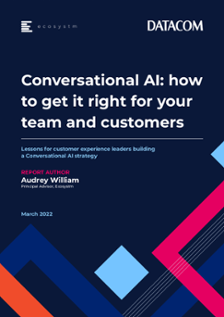
(Clicking on this link will take you to the Datacom website where you can download the whitepaper)

A new model of government has been expedited by the pandemic. There has been an increased requirement for fast, intense and agile government intercession, together with the continued emergence and growth of digital consumerism. This has shone a light on effective government service delivery to the collective experiences and wellbeing of the individual citizen and the wider communities they form. Expectations of the citizen as a commercial customer also continues to increase and within this paradigm, the pressure on public sector organisations to break down all barriers to deliver a seamless service experience is intense. Customer Focused, Community First.
Download the full whitepaper “Three Key Steps to Public Sector Citizen Engagement” from Fujitsu, ServiceNow and Ecosystm.

(Clicking on this link will take you to the Fujitsu website where you can download the whitepaper)

HR has the biggest role to play in shaping the employee experience that an organisation provides – and it cannot achieve this without a close alliance with the Tech/Digital Team. While this synergy is missing in most organisations, HR teams need to step up by listening to what their employees are saying. Having an understanding of how perspectives change based on employees’ demographic profiles, can help HR teams immensely.

The role of HR has evolved
The corporate challenge of managing skills shortages, employer of choice strategies, and flexible work programs have long existed. It’s just that, like most strategic imperatives, they have been optional, even for the most competitive businesses.
The Ecosystm Voice of the Employee Study highlights that the current resignation pandemic is supercharging a skills famine for many firms. But with almost all attention from the Great Resignation still focused on employee experience (EX), deep consideration must be given to efficiently and effectively navigating the extreme workload now facing internal HR functions.
Recruiting, inducting, onboarding, training, and cross-boarding new staff, while exiting and off-boarding old staff, often remotely and at high volume, will see shadow-HR technologies and practices bleed out of People and Capability departments as companies scramble to reset demand.
Regardless of industry, every company’s core business just became HR!

The need for Personalised Employee Experience
The industry has been talking about the need to create personalised customer experience (CX) for a while now – we should talk about creating personalised EX now.
Given the changes and challenges that your employees have faced over the last two years, they have developed some strong work preferences. HR has the biggest role to play in shaping the EX your organisation provides – and it cannot achieve this without a close alliance with the Tech/Digital Team.
According to the Ecosystm Voice of Employee Study, 50% of your employees believe that improved EX leads to better CX.
It may not be possible to cater to the needs of every individual employee. But taking into consideration some of the differences – whether based on role, age, gender, family status and so many other factors that make up an individual – will help you shape your organisation’s Digital Workplace strategy and offer a more personalised EX.
Here are 5 gender differences in workplace behaviour according to the Ecosystm Voice of the Employee Study.
- Women are more likely to change jobs in 2022
- The assumption that women prefer to work from home is wrong
- More men prefer 5-Day work weeks
- The challenges of working from home might be very different
- Women and men have different collaboration styles
Read on for more insights.
Download “The Future of the Digital Workplace: The HR Perspective” slides as a PDF



